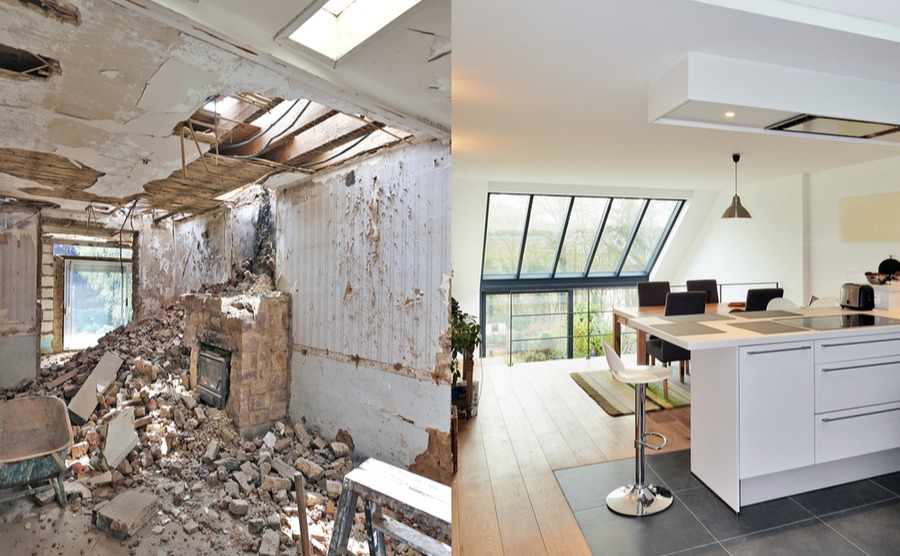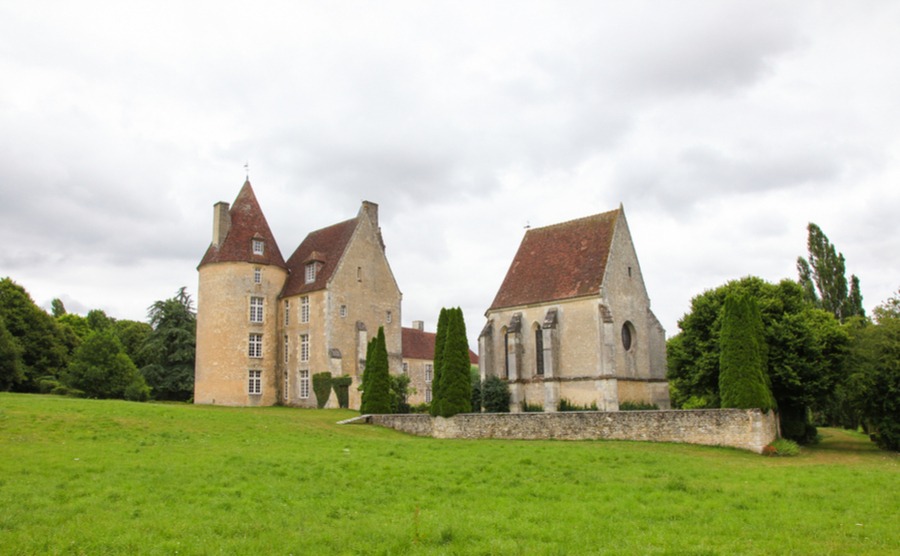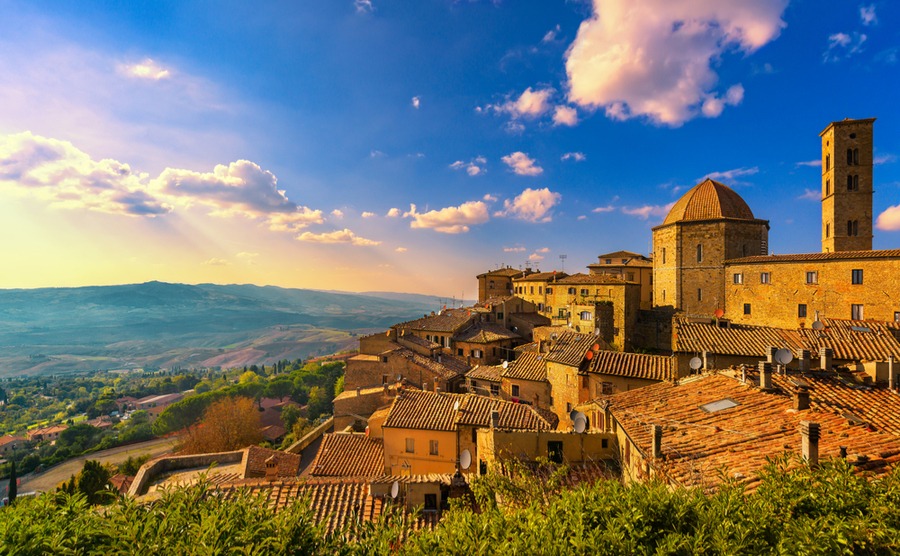One of the joys of buying abroad is taking on the challenge of creating something outstanding. Who hasn’t seen that down at heel French chateau or Italian palazzo and wondered, “could I?” We spoke to a lady who took on the challenge of restoring property abroad, and came back for more! Julia Silk says there is nothing more rewarding than taking an old building with all its unique style and character features and transforming it into the home of your dreams. Having renovated large properties in Greece, Croatia and Italy, here is her advice.
Finding inspiration
While living in the UK my secret vice was looking at property porn! Magazines such as Homes and Gardens, The World of Interiors, 25 Beautiful Homes etc. and building a picture in my mind of my dream home. But where should it be?
The love of a particular colour scheme or architectural style can draw you to a particular country. For example, I love blue and white, and stone buildings with character features. So, we were naturally drawn to Greece for our first renovation project abroad. Following that we went to Croatia and finally discovered our dream location was in Italy.

Creating a home to be proud of
Once you fall in love with a particular location you find yourself noticing its architectural features and interior design elements wherever you go. The vaulted ceiling of a winery, the fireplace in a restaurant, the ceramics in the museum, the carved door surrounds at a nearby castle. And if the property you purchase doesn’t have all the features you love, it’s so satisfying to incorporate them into the property during renovation.
Appreciating craftsmen from the past
You can hunt for years, trying to find a house that is exactly what you want, in a prime location and ready to move in. The best property locations in the world tend to already have a property on them! But you can always find a house in a great location with potential.
It’s so exciting when you uncover arches, frescoes and fireplaces that have been boarded up and painted over
But before rushing to knock it down and build your own grand design, take a moment to appreciate the qualities of the existing house. There are some amazing historic houses, castles and villas for sale that at first glance may look dated and shabby. But take a closer look at the craftsmanship that has gone into the architecture of these buildings and you may be amazed at what you discover. It’s so exciting when you uncover arches, frescoes and fireplaces that have been boarded up and painted over. And they make great talking points when you show family and friends around your new home, and explain its history.
Choosing a house to renovate
Look past the shabby furniture and peeling wallpaper and find the building itself. Does it have the size and layout to suite your needs? Is it in a good location? We have all met the house viewer who says “Oh, I don’t like the furniture”. Well, excuse me, but it’s the house that’s for sale, not the furniture!
Some buyers fall in love with the amazing view from the terrace, while failing to notice the cracks and subsidence that require totally knocking down and rebuilding. It’s vital to have the property surveyed. Seek quotes for work required before rushing into a purchase.
Most importantly, look out for those beautiful structural features that will make the finished renovation unique. That’s where the property’s character will come through. It should reflect the combined style of both yourself and the country you are in.
Each property we have bought, just felt right as soon as we walked in. We could immediately picture what the finished renovation would look like. Looking back at the ‘before photos’ of each project, we’re sometimes amazed that we saw potential of a building in such bad repair.
Choosing the right people
The people to turn your dream into reality begin with the estate agent. A reliable and trustworthy agent, who gives a good aftersales service, is worth his or her weight in gold. Often, the best will have worked with foreign buyers in the past and can recommend local architects, builders and trades people.
However, don’t just accept the agent’s recommendations without first asking other expats in the area for their opinions. It may be better to source tradespeople separately, rather than simply accepting those put forward by one contractor. Then each can be judged on their own merits and replaced if they don’t come up to scratch.
Every country has its “cowboys”, those lovable rogues that at first meeting are incredibly friendly. Once they have your money in their hands they’ll soon want more, and then don’t finish the job.
Although it’s tempting to bring in people you’ve used before, local professionals will know where to source the best materials and have contacts at the planning office.
If you can’t be on site during the renovation work you will need a project manager to co-ordinate the different trades people. They should ensure the work moves forward, with everything done to the correct standard. They should provide progress reports backed with photographs.
Although it’s tempting to bring in people you’ve used before, we’ve found it better to use local professionals. They know where to source the best materials and have contacts at the planning office. They will also understand how the local environment and weather should affect the design of the house. For example, you wouldn’t build a glass conservatory in a hot region. You’re more likely to need a veranda to shade the doors and walls.

A manoir in France (jorisvo / Shutterstock.com)
Getting quotes
Get at least three quotes in writing for the renovation work before going through with any house purchase. As well as the cost of new electrics, plumbing and heating where required, these quotes must include architect fees and the cost of putting in for any planning permission.
Expensive extras to take into account include taking away old rubble, structural repairs, a new roof, new flooring, kitchens and bathrooms and replacement doors and windows.
Ensure all quotes cover every detail. We once ordered some windows to be made by a local carpenter. When he came to fit them, he arrived with just the wooden frames. He then informed us that the price he quoted didn’t include glass, hinges or locks.
Investing in a renovation project
Renovating a property can be a great investment so long as you are prudent with your spending and question prices that seem too steep. Be prepared to walk away from people who try and overcharge.
If this is primarily an investment, bear that in mind at the design stage of your renovation. You may love those bright multi-coloured kitchen tiles, but will future prospective house buyers? Increase the value of the property with quality structural features, luxury kitchens and bathrooms, a swimming pool that’s that bit more stylish and extra rooms.
See what other finished properties are selling for in the area and how quickly they sell. We have made good profits from renovating family-sized houses and then selling them a couple of years later. Very large properties can also create wonderful financial returns when transformed into luxury hotels or rented out for holidays and weddings.
For example, Sting and Trudie Styler’s villa and estate in Tuscany was originally built as a hunting lodge for a Florentine noble family. Since purchasing the property they have lovingly renovated the villa, preserving its natural beauty and greatly enhancing its style and charm.
The magnificent Il Palagio is now a nine-bedroom 16th century villa with all the luxury touches. That includes well-manicured gardens, a large swimming pool, tennis court, stables, state of the art recording studio and conference centre. It has accommodation for up to 47 people in the villa and the four guesthouses on the estate too. During August it is their home, but when available it can be rented for holidays and weddings.

Italy still offers plenty of affordable property to make a great restoration
Adding your own touches
The fun part of renovating a property is being able to choose everything that goes into it. Plus, you can have your dream kitchen and bathroom. From the outset you should have a vision of what it will look like, right down to positioning of electrical appliances and furniture. The electrical plan will be done at a very early stage, so positioning of TVs, bedside lamps, cookers etc. need deciding early on.
I try and incorporate an interesting feature into every room, including bedrooms and bathrooms, which are often so boxy and boring
Personally, I love creating a home that reflects the style of the country it is in. I don’t want a typically English room in Italy. I try and incorporate an interesting feature into every room, including bedrooms and bathrooms, which are often so boxy and boring. These features can include fireplaces, stone arches, exposed stone walls, frescoes, beautiful floor tiles, columns, exposed wooden beams and stone vaulted ceilings.
I also use locally sourced materials in the house, such as, stone and marble from the local quarry. We even found a local company that cut the stone to form columns to support our new veranda. There are some amazingly talented artisans around! They will create the most amazing roofs, hand-painted tiles and traditional wooden windows, doors and shutters. Finishing the home with pieces hand-made by a local artist or craftsperson not only adds beauty to your home, but also helps to support the local economy and preserve the traditions, culture and skills that have been handed down through the generations.
Renovating a large property can take longer than you imagined and cost more than you had planned. But, when it is finished you will be able sit back and proudly admire the beautiful home you have created. It is so very satisfying to take an unloved building and bring it back to life, by not only restoring it to its former glory but to also add more features that will be enjoyed and admired by generations to come.






